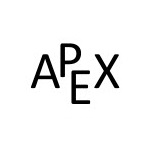1.2.1: Ejercicios 1.2
- Page ID
- 113956
\( \newcommand{\vecs}[1]{\overset { \scriptstyle \rightharpoonup} {\mathbf{#1}} } \)
\( \newcommand{\vecd}[1]{\overset{-\!-\!\rightharpoonup}{\vphantom{a}\smash {#1}}} \)
\( \newcommand{\id}{\mathrm{id}}\) \( \newcommand{\Span}{\mathrm{span}}\)
( \newcommand{\kernel}{\mathrm{null}\,}\) \( \newcommand{\range}{\mathrm{range}\,}\)
\( \newcommand{\RealPart}{\mathrm{Re}}\) \( \newcommand{\ImaginaryPart}{\mathrm{Im}}\)
\( \newcommand{\Argument}{\mathrm{Arg}}\) \( \newcommand{\norm}[1]{\| #1 \|}\)
\( \newcommand{\inner}[2]{\langle #1, #2 \rangle}\)
\( \newcommand{\Span}{\mathrm{span}}\)
\( \newcommand{\id}{\mathrm{id}}\)
\( \newcommand{\Span}{\mathrm{span}}\)
\( \newcommand{\kernel}{\mathrm{null}\,}\)
\( \newcommand{\range}{\mathrm{range}\,}\)
\( \newcommand{\RealPart}{\mathrm{Re}}\)
\( \newcommand{\ImaginaryPart}{\mathrm{Im}}\)
\( \newcommand{\Argument}{\mathrm{Arg}}\)
\( \newcommand{\norm}[1]{\| #1 \|}\)
\( \newcommand{\inner}[2]{\langle #1, #2 \rangle}\)
\( \newcommand{\Span}{\mathrm{span}}\) \( \newcommand{\AA}{\unicode[.8,0]{x212B}}\)
\( \newcommand{\vectorA}[1]{\vec{#1}} % arrow\)
\( \newcommand{\vectorAt}[1]{\vec{\text{#1}}} % arrow\)
\( \newcommand{\vectorB}[1]{\overset { \scriptstyle \rightharpoonup} {\mathbf{#1}} } \)
\( \newcommand{\vectorC}[1]{\textbf{#1}} \)
\( \newcommand{\vectorD}[1]{\overrightarrow{#1}} \)
\( \newcommand{\vectorDt}[1]{\overrightarrow{\text{#1}}} \)
\( \newcommand{\vectE}[1]{\overset{-\!-\!\rightharpoonup}{\vphantom{a}\smash{\mathbf {#1}}}} \)
\( \newcommand{\vecs}[1]{\overset { \scriptstyle \rightharpoonup} {\mathbf{#1}} } \)
\( \newcommand{\vecd}[1]{\overset{-\!-\!\rightharpoonup}{\vphantom{a}\smash {#1}}} \)
Términos y Conceptos
Ejercicio\(\PageIndex{1}\)
¿Qué significa “la función\(f(t)\)” tell you that “the function \(f\)” does not?
- Contestar
-
Nos dice que\(t\) is the input for the function \(f\).
Ejercicio\(\PageIndex{2}\)
T/F: Si\(g(x)=x^2\), then \(g(2)=g(-2)\).
- Contestar
-
Cierto
Ejercicio\(\PageIndex{3}\)
T/F: No se pueden combinar funciones usando tanto composición como cocientes en una misma función.
- Contestar
-
Falso
Ejercicio\(\PageIndex{4}\)
T/F: En la combinación\(g(f(x))\), \(f(x)\) is the input for \(g(x)\).
- Contestar
-
Cierto
Problemas
Vamos\(f(x) = x^{3}\),\(g(x) = x + 4\), y\(h(x) = \sin (x)\). Cada ejercicio\(\PageIndex{5}\) —\(\PageIndex{8}\) es alguna combinación de\(f(x)\),\(g(x)\), y\(h(x)\). Determine el tipo de combinación y escríbelo usando la notación de funciones. Por ejemplo,\(x^{3} + x + 4\) es la adición de\(f(x)\) y\(g(x)\) y se puede escribir como\(f(x) + g(x)\).
Ejercicio\(\PageIndex{5}\)
\(\frac{x^3}{\sin{(x)}}\)
- Contestar
-
Cociente de\(f(x)\) and \(h(x)\); \(\frac{f(x)}{h(x)}\)
Ejercicio\(\PageIndex{6}\)
\(\sin{(x+4)}\)
- Contestar
-
Composición de\(h(x)\) with \(g(x)\); \(h(g(x))\)
Ejercicio\(\PageIndex{7}\)
\(\sin{(x)}+4\)
- Contestar
-
Composición de\(g(x)\) with \(h(x)\); \(g(h(x))\)
Ejercicio\(\PageIndex{8}\)
\((2x^3)(x+4)\)
- Contestar
-
Producto de un múltiplo escalar de\(f(x)\) with \(g(x)\); \((2f(x))(g(x))\)
En ejercicios\(\PageIndex{9}\) —\(\PageIndex{11}\), determinar la variable de entrada de cada función, cualquier parámetro de la función y el tipo de función.
Ejercicio\(\PageIndex{9}\)
\(C(A) = \frac{k \epsilon_0 A}{d}\)
- Contestar
-
La variable de entrada es\(A\). The parameters are \(k\), \(\epsilon_0\), and \(d\). This is a monomial of degree 1.
Ejercicio\(\PageIndex{10}\)
\(v(t) = -9.8t + v_0\)
- Contestar
-
La variable de entrada es\(t\). The only parameter is \(v_0\). This is a polynomial of degree 1.
Ejercicio\(\PageIndex{11}\)
\(A(t)=P(1+\frac{r}{n})^{nt}\)
- Contestar
-
La variable de entrada es\(t\). The parameters are \(P\), \(r\), and \(n\). This is an exponential function.
En ejercicios\(\PageIndex{12}\) —\(\PageIndex{17}\), evaluar la expresión dada.
Ejercicio\(\PageIndex{12}\)
Dado\(f(x)=2x^2\) and \(g(x)=x-b\), find \(5f(3a)-g(4)\)
- Contestar
-
\(90a^2-4+b\)
Ejercicio\(\PageIndex{13}\)
Dado\(f(x)=x^2-3\) and \(g(x)=x-b\), find \(f(y+h)-3g(5)\)
- Contestar
-
\(y^2+2yh+h^2-18+3b\)
Ejercicio\(\PageIndex{14}\)
Dado\(f(x)=5-x\) and \(g(x)=-x^4+p\), find \(f(y+h)-3g(y)\)
- Contestar
-
\(5-y-h+3y^4-3p\)
Ejercicio\(\PageIndex{15}\)
Dado\(f(\theta)=\frac{\theta+3}{\theta-2}\) and \(g(\theta)=\theta^2+4\), find \(g(f(3))\)
- Contestar
-
\(40\)
Ejercicio\(\PageIndex{16}\)
Dado\(g(x)=x^2-4\) and \(f(x)=\sqrt{x+8}\), find \(g(x+h)-2f(8)\)
- Contestar
-
\(x^2+2xh+h^2-12\)
Ejercicio\(\PageIndex{17}\)
Dado\(f(y)=y-5\) and \(g(y)=h-y^2\), find \(g(f(y))-f(g(y))\)
- Contestar
-
\(10y-20\)
En ejercicios\(\PageIndex{18}\) —\(\PageIndex{21}\), determinar el cociente de diferencia de cada una de las siguientes funciones.
Ejercicio\(\PageIndex{18}\)
\(h(r)=2r+4\)
- Contestar
-
\(2\)
Ejercicio\(\PageIndex{19}\)
\(g(y)=4y-7\)
- Contestar
-
\(4\)
Ejercicio\(\PageIndex{20}\)
\(y(x)=x^2+6\)
- Contestar
-
\(2x+h\)
Ejercicio\(\PageIndex{21}\)
\(f(t)=4t^2+x\)
- Contestar
-
\(8t+4h\)


